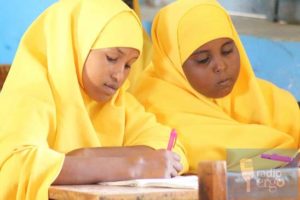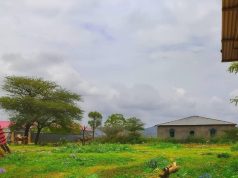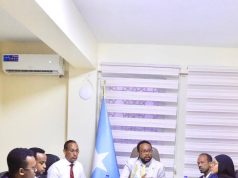In Somalia, primary school enrollment ratio is among world’s lowest. A stunning 70 per cent school-age children are out of school. That is 3 million of 4.4 million children. The numbers are grimmer in rural areas or IDPs settlements, where only 17 percent of children are enrolled in primary schools. According to the Somalia Education cluster, education gaps and needs are largely a consequence of lack of adequate learning facilities, teachers, basic emergency teaching and learning materials, but also insecurity, lack of food and water and limited sanitation facilities.
In Southwest State of Somalia, a recent assessment has identified learning spaces, limited teachers support, limited learning kits and community education committees (CEC) structures as the most critical needs, and the biggest challenge as Baidoa faces large waves of internal displacement. While the new arrivals have translated into an increasing number of enrollments in school, this in fact this has put further strain on already weak infrastructures and limited resources available to IDPs and host communities.
To address this, the Rural Education and Agriculture Development Organization (READO), with support from the Somalia Humanitarian Fund (SHF), has been improving access to education for children in four schools in Baidoa through an integrated and innovative approach. The SHF has allocated USD 483,266 to these projects.
Together with the Ministry of Education, READO has identified four community education facilities – Lowilay, Awdinle, Daryel, and Imamu-Malik community schools in Baidoa rural areas. It has trained members of the 34 CECs from the four targeted community education facilities for a period of 2 days, targeting educators’ skills to enable them to effectively participate in school management, while helping them understand their roles and responsibilities, how to mobilize resources for the schools, ways to increase school enrollment and how to involve the community in actively supporting the schools.







